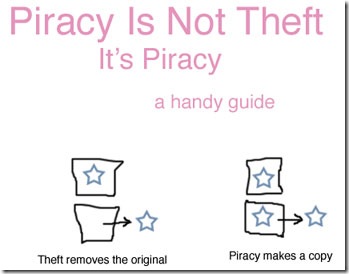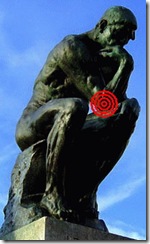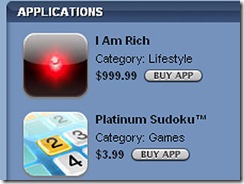Aug 29
 A virus has infected some laptop computers aboard the International Space Station. The low-risk virus, designed to swipe passwords from online gamers, was identified as the W32.Gammima.AG worm.
A virus has infected some laptop computers aboard the International Space Station. The low-risk virus, designed to swipe passwords from online gamers, was identified as the W32.Gammima.AG worm.
"This is basically a nuisance," said NASA spokesperson Kelly Humphries. An investigation is underway to determine how the virus got on board the space station, which is floating more than 200 miles above the Earth. "We’ll do our best to track down how it got there and close that gateway," Humphries said. "This is not a frequent occurrence but we have had viruses that have made their way on board before."
Only a handful of the 71 laptops currently on board the space station run Windows. Those laptops will likely be updated with the newest patches and anti-virus software, something you think NASA officials would have done long ago.
Read more at Space.com
Aug 27
There’s an image making its rounds on the Web that says “Piracy is Not Theft” because it makes a copy and leaves the original intact:

Continue reading »
Aug 21

Microsoft is apparently tired of being portrayed as a dumpy has-been in Apple’s "Hello, I’m a Mac" commercials. The software giant has just launched a new $300 million ad campaign with Jerry Seinfeld as its celebrity pitchman. Seinfeld will appear in the some of the ads with Microsoft founder and chairman Bill Gates and will receive about $10 million in payment. The ad campaign will debut September 4 and is one of the largest in the company’s history.
The new ads will use the slogan "Windows, Not Walls," which really speaks to me as a computer user because I’m always running into walls and… wait, WTF does that mean? Apparently the point is to break down the barriers that prevent people and ideas from connecting. Hmm, hasn’t Microsoft ever heard of that thing called "The Internet?" As Homer Simpson once said, "Oh, they have the Internet on computers now."
Continue reading »
Aug 20
Microsoft has released Service Pack 1 for Visual Studio 2008 and .NET 3.5. This update patches numerous bugs, improves performance, and even adds a few new features.
As a .NET commercial software developer, I am most excited that SP1 provides a .NET Framework installation optimized for client applications. The optimized download is less than 28 MB, compared to the original 200 MB download that all but ensured consumers would not download .NET 3.5 and hence forced us to remain on .NET 2.0 (see FAT .NET).
Continue reading »
Aug 19
This is part 4 in a series of articles on obscure programming languages.
Dao is an object-oriented scripting language with dynamically-typed variables. Dao supports complex data structures with built-in types such as complex numbers and multi-dimensional arrays, and includes their corresponding arithmetic operations. Dao also supports multi-threaded programming, concurrent and distributed programming with message passing, regular expressions, and macros that allow new syntax to be defined.
Continue reading »
Aug 18
This programmer discovered the hard way the importance of testing:
in 1998, i made a C++ program to calculate pi to a billion digits. i coded it on my laptop (pentium 2 i think) and then ran the program. the next day i got a new laptop but decided to keep the program running. it’s been over seven years now since i ran it. and this morning it finished calculating. the output: "THE VALUE OF PI TO THE BILLIONTH DIGIT IS = "
mindblowing eh? i looked in the code of my program, and i found out that i forgot to output the value :(.
Comment: true story, i fixed the code and am running it again. (Source)
This cautionary tale reminds me of a certain fictional computer that worked for 7-1/2 million years to calculate the meaning of life, only to output the number 42:
"I think the problem is that the question was too broadly based…"
"Forty two?!" yelled Loonquawl. "Is that all you’ve got to show for seven and a half million years’ work?"
"I checked it very thoroughly," said the computer, "and that quite definitely is the answer. I think the problem, to be quite honest with you, is that you’ve never actually known what the question is." (Source)
Aug 14
If you haven’t seen this video yet, it’s worth two minutes of your time. This is a recording of an actual Dell customer service phone call. The call is recreated by two talented actors, and spliced together with some very clever editing. It’s a little bit rude but LOL funny. Enjoy!
http://www.youtube.com/watch?v=2bF5bVi5wKQ
Aug 11
 I was diagnosed with cubital tunnel syndrome 3 years ago. My symptoms were considered "moderate": measurable loss of nerve conduction, moderate to severe pain at times, slight numbness, some weakness, but no atrophy. I had been attempting conservative treatment, including wearing a splint at night, wrist brace during the day, exercises, special computer keyboard and mouse, and pain medication.
I was diagnosed with cubital tunnel syndrome 3 years ago. My symptoms were considered "moderate": measurable loss of nerve conduction, moderate to severe pain at times, slight numbness, some weakness, but no atrophy. I had been attempting conservative treatment, including wearing a splint at night, wrist brace during the day, exercises, special computer keyboard and mouse, and pain medication.
But the pain wouldn’t go away, especially while using the computer, which is my job as a software developer. So my doctor finally decided it was time for surgery, and given that my symptoms were not yet severe, he recommended ulnar decompression surgery. This article describes my experience with ulnar decompression surgery for cubital tunnel syndrome.
Read the rest of this article at Cubital-Tunnel.com
Image: "Cubital Thinker" Copyright © 2008 Tiwebb, Ltd.
Aug 11

Apple pulled the plug on a controversial application sold in its new iTunes App Store. Last Thursday, Apple removed the $999.99 “I Am Rich” application created by developer Armin Heinrich. Apparently eight idiots with nothing better to do with their money had purchased the “glorified screensaver” before it was removed from sale.
The “I am Rich” application displays a glowing red gem on the iPhone screen for the sole purpose of proving that the iPhone’s owner is either rich or stupid or probably both. That’s literally all it does. Here is the product’s official description: “The red icon on your iPhone or iPod Touch always reminds you (and others when you show it to them) that you were able to afford this. It’s a work of art with no hidden function at all.”
Continue reading »
Aug 08
In a ruling that’s likely to send shock waves throughout the technology industry, the California Supreme Court upheld a 136-year-old state law against non-compete clauses in employment contracts. The ruling says that employers cannot restrict employees from working for a competitor or soliciting former clients once they leave the company.
Continue reading »
 A virus has infected some laptop computers aboard the International Space Station. The low-risk virus, designed to swipe passwords from online gamers, was identified as the W32.Gammima.AG worm.
A virus has infected some laptop computers aboard the International Space Station. The low-risk virus, designed to swipe passwords from online gamers, was identified as the W32.Gammima.AG worm. 

 I was diagnosed with cubital tunnel syndrome 3 years ago. My symptoms were considered "
I was diagnosed with cubital tunnel syndrome 3 years ago. My symptoms were considered "